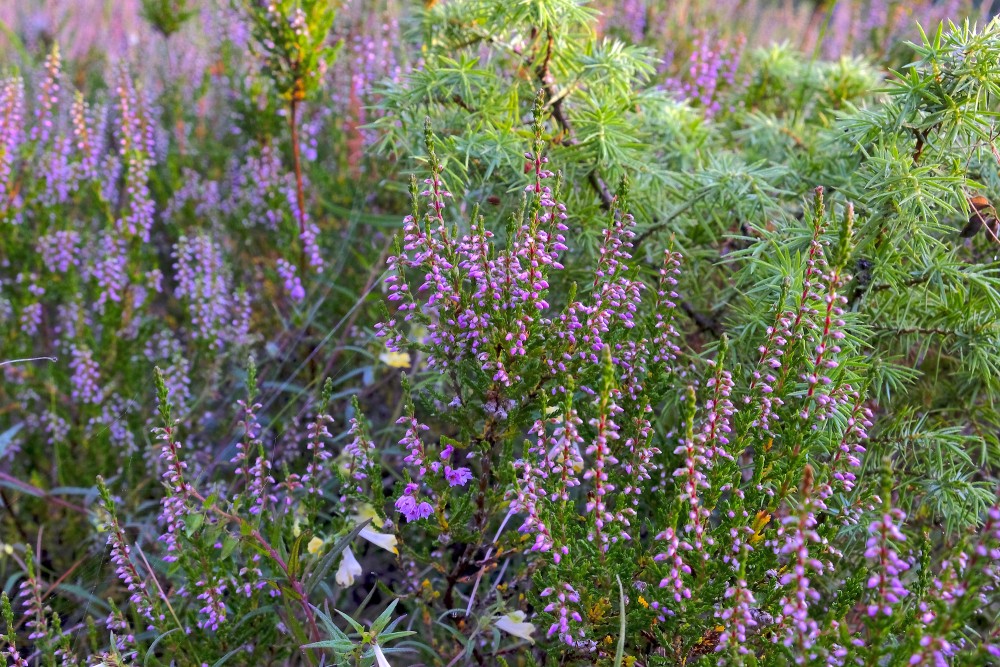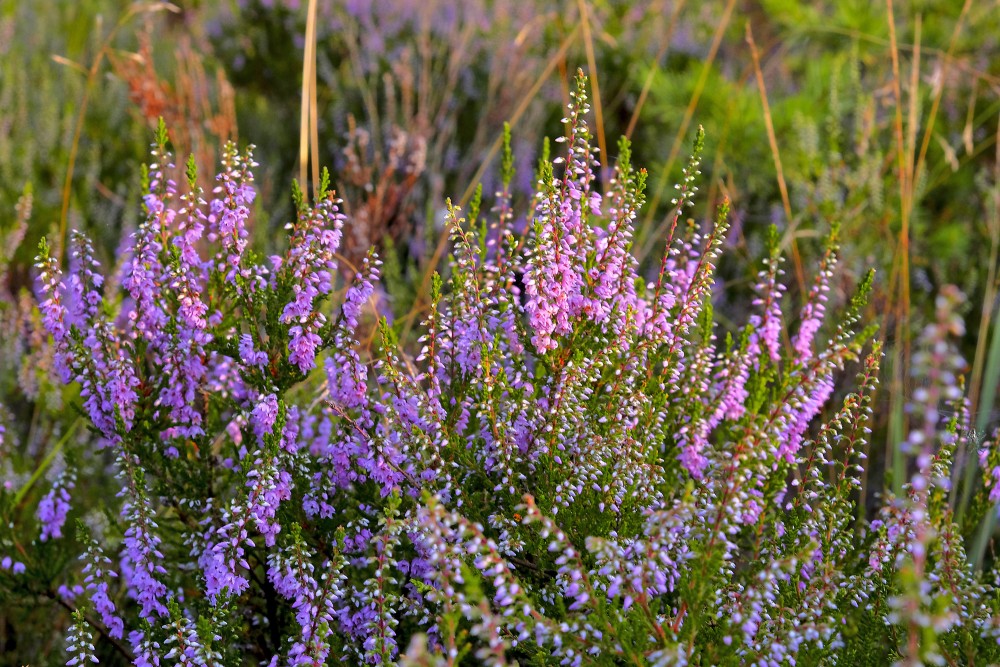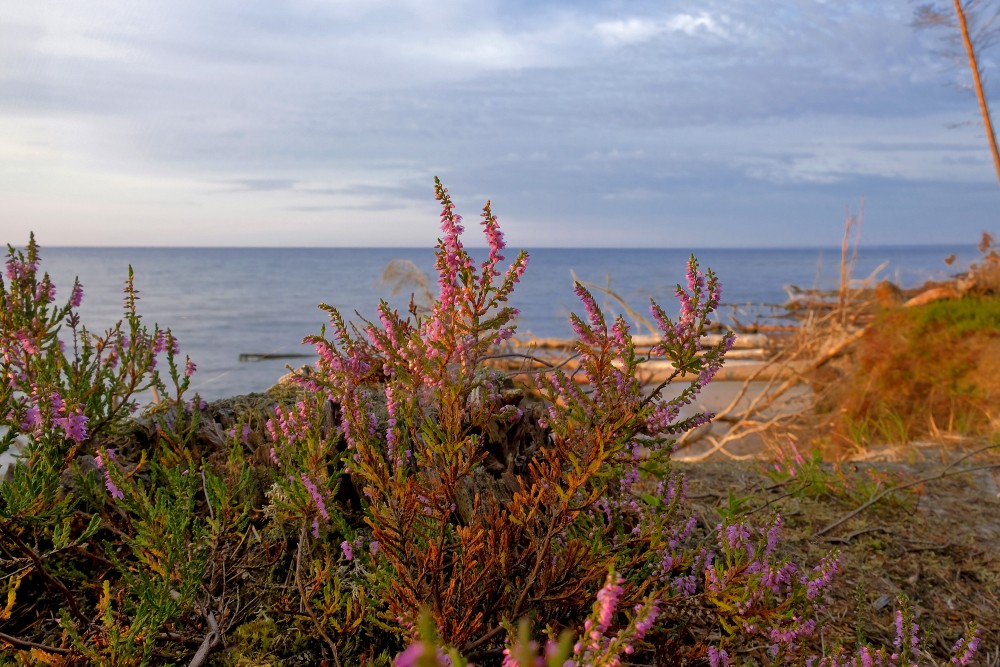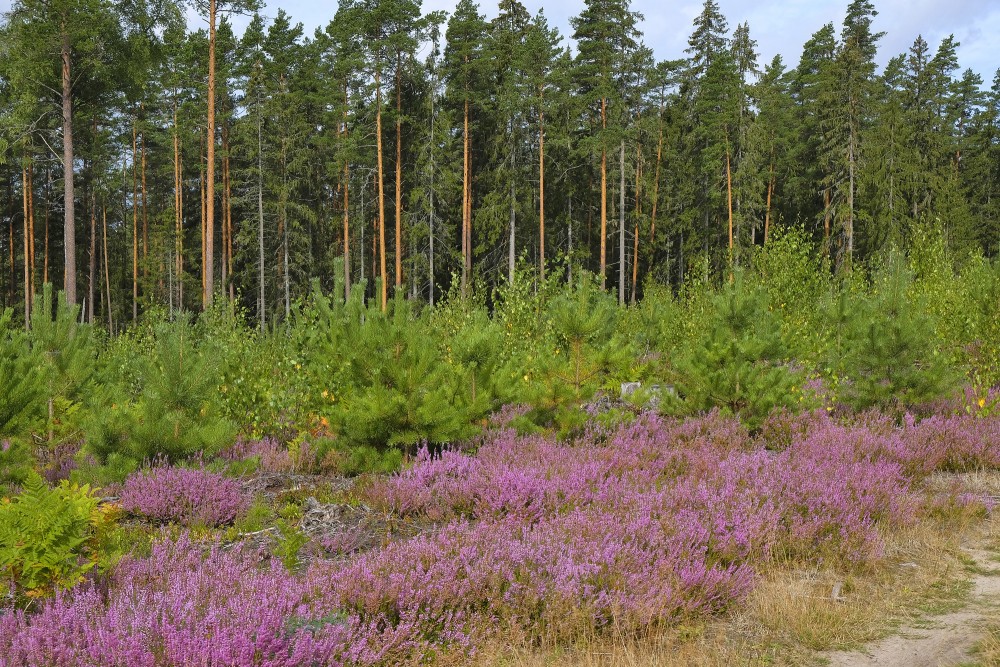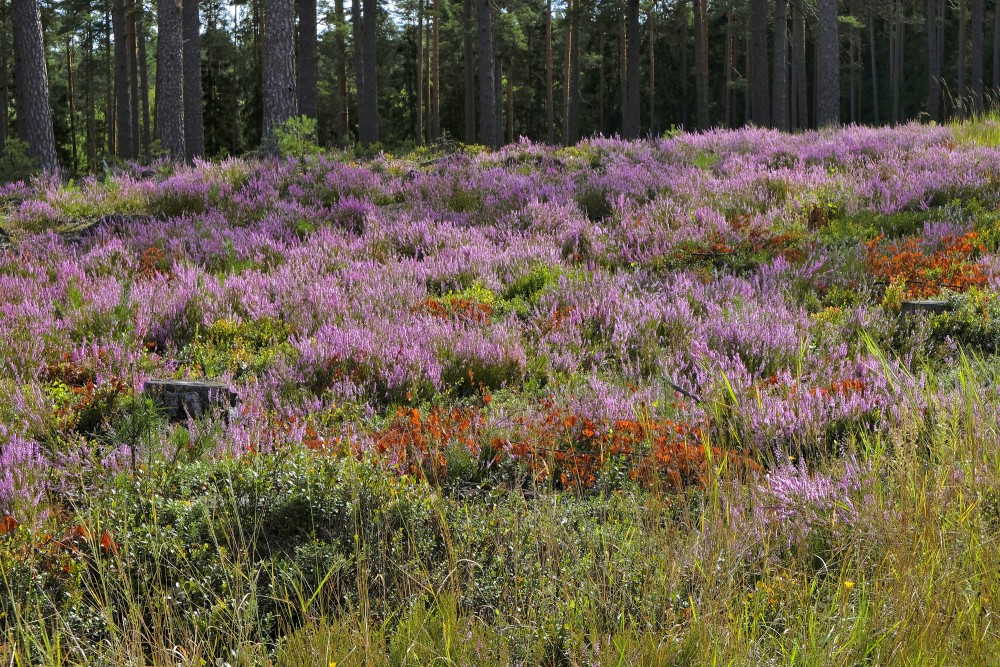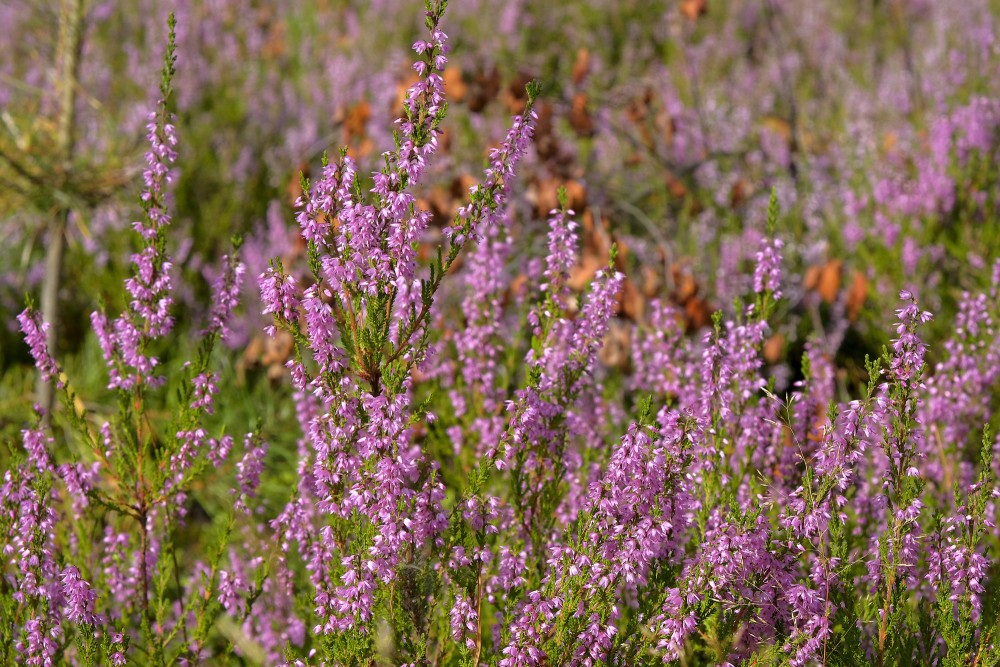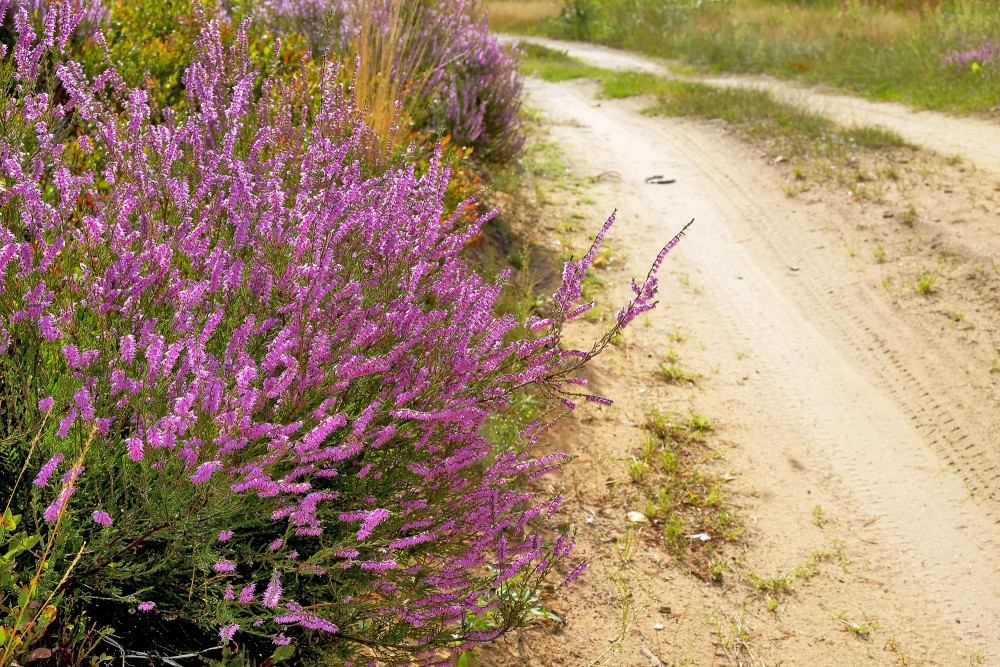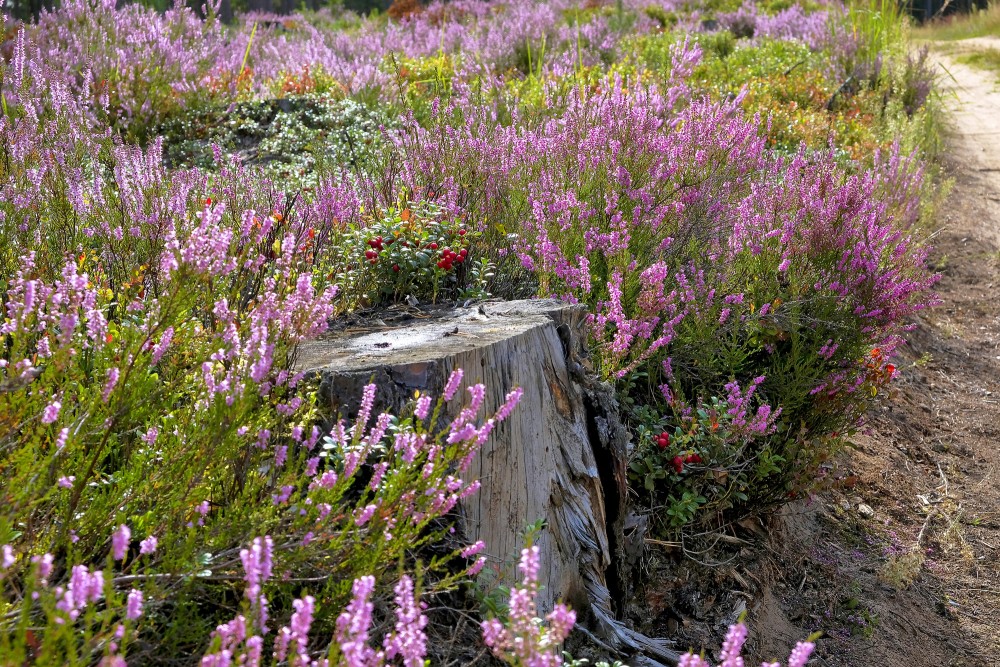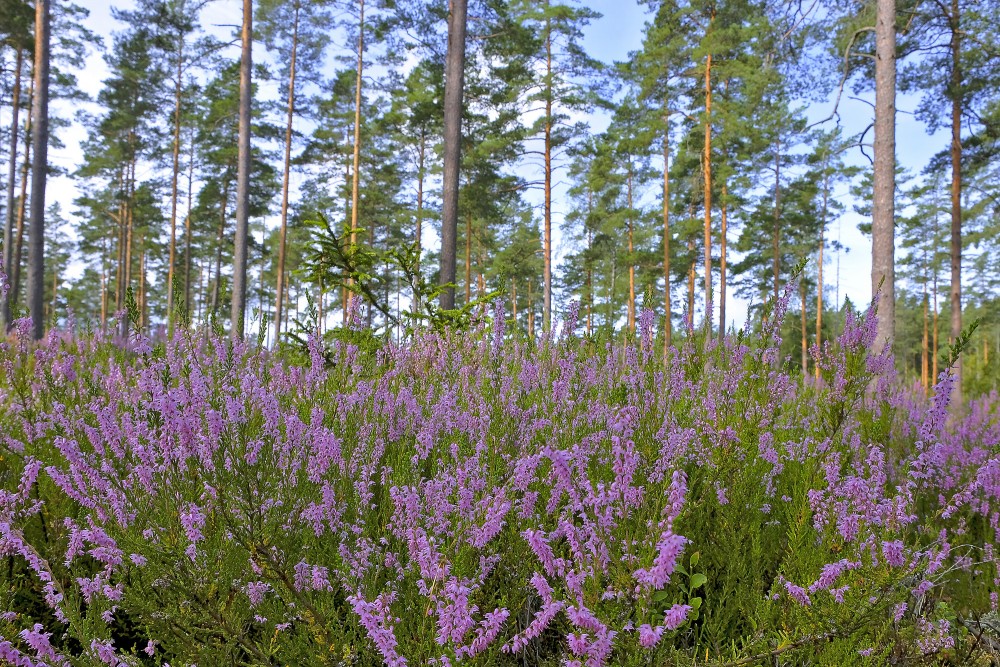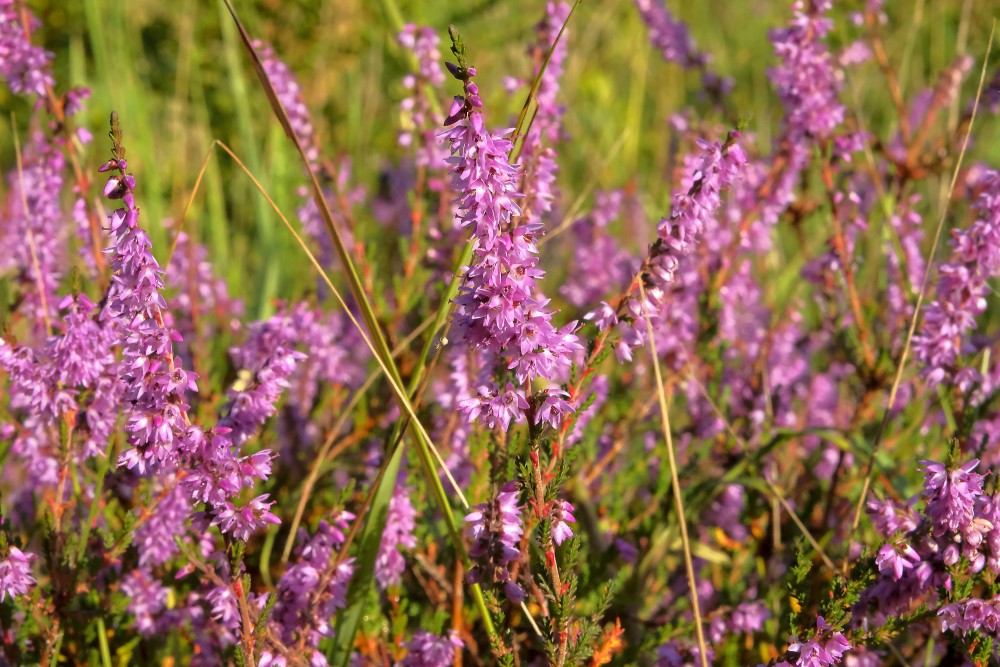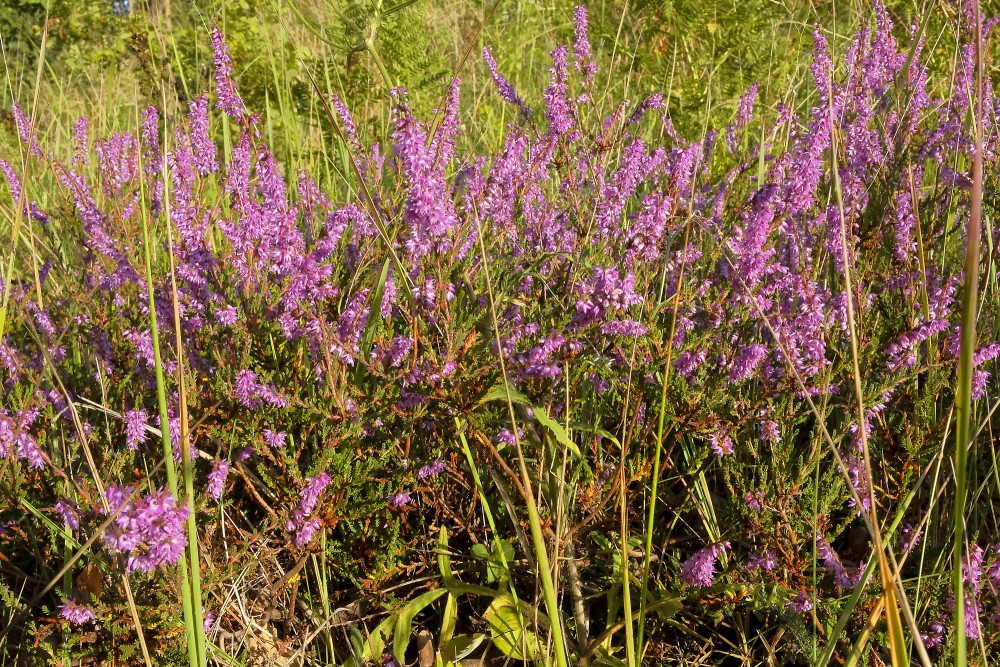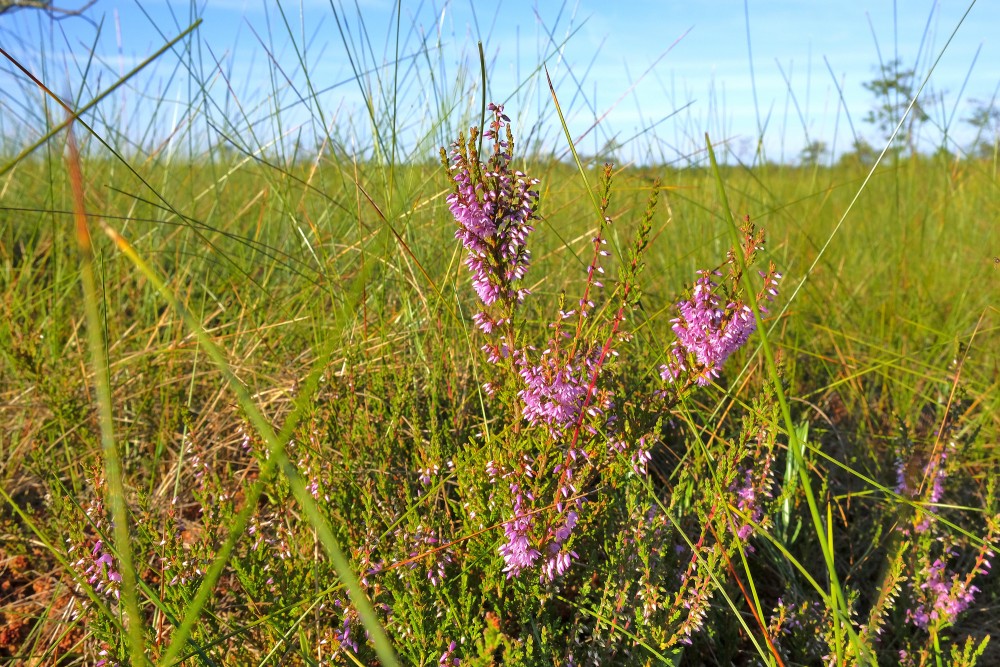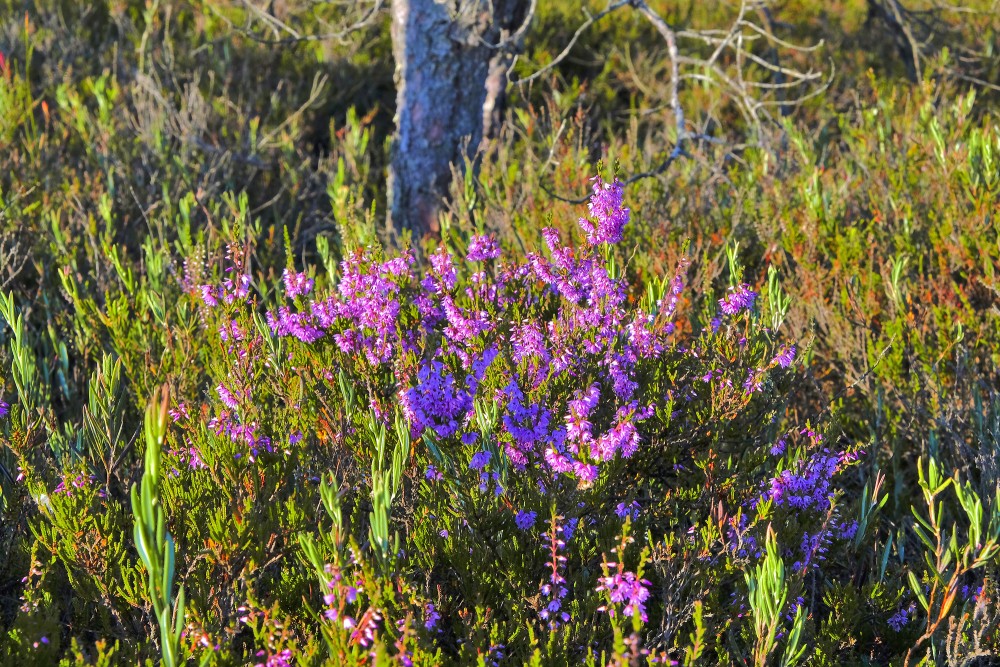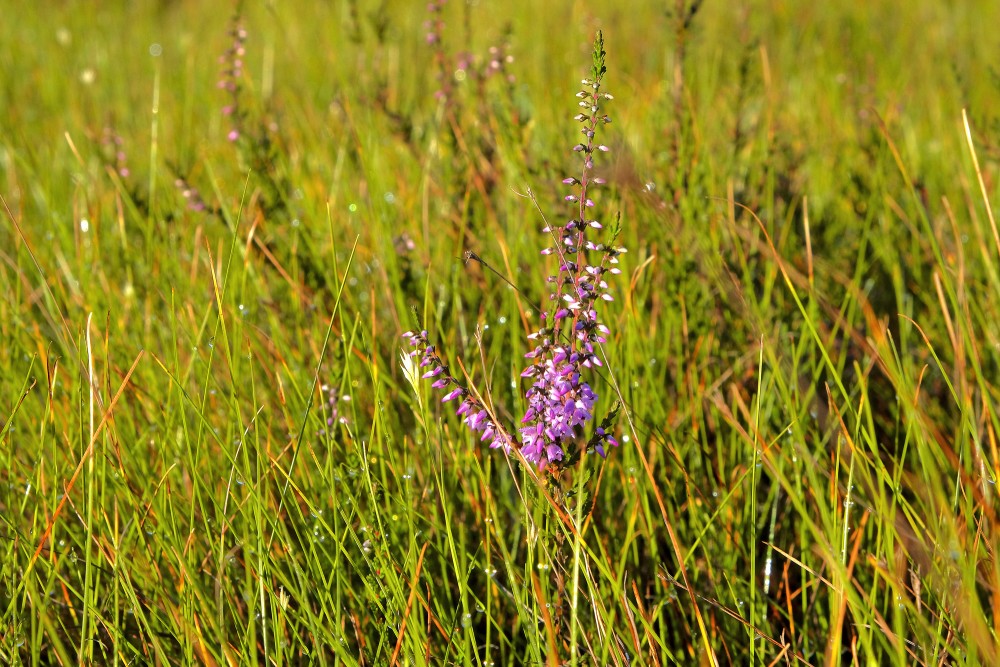(Calluna vulgaris) Heather
Calluna vulgaris (known as common heather, ling, or simply heather) is the sole species in the genus Calluna in the flowering plant family Ericaceae. It is a low-growing perennial shrub growing to 20 to 50 centimetres (7.9 to 19.7 in) tall, or rarely to 1 metre (39 in) and taller, and is found widely in Europe and Asia Minor on acidic soils in open sunny situations and in moderate shade. It is the dominant plant in most heathland and moorland in Europe, and in some bog vegetation and acidic pine and oak woodland. It is tolerant of grazing and regenerates following occasional burning, and is often managed in nature reserves and grouse moors by sheep or cattle grazing, and also by light burning.
Calluna was separated from the closely related genus Erica by Richard Anthony Salisbury, who devised the generic name Calluna probably from the Greek Kallyno (καλλύνω), "beautify, sweep clean", in reference to its traditional use in besoms. The specific epithet vulgaris is Latin for 'common'. Calluna is differentiated from Erica by its corolla and calyx each being in four parts instead of five.
Description
Calluna has small scale-leaves (less than 2–3 mm long) borne in opposite and decussate pairs, whereas those of Erica are generally larger and in whorls of 3-4, sometimes 5. The flowers emerge in late summer; in wild plants these are normally mauve, but white-flowered plants also occur occasionally. They are terminal in racemes with sepal-like bracts at the base with a superior ovary, the fruit a capsule. Unlike Erica, Calluna sometimes sports double flowers. Calluna is sometimes referred to as Summer (or Autumn) heather to distinguish it from winter or spring flowering species of Erica.
Cultivation
Despised until the 19th century for its associations with the most rugged rural poverty, heather's growth in popularity may be paralleled with the vogue for alpine plants. It is a very popular ornamental plant in gardens and for landscaping, in lime-free areas where it will thrive, but has defeated many a gardener on less acid soil. There are many named cultivars, selected for variation in flower colour and for different foliage colour and growing habits.
Different cultivars have flower colours ranging from white, through pink and a wide range of purples, and including reds. The flowering season with different cultivars extends from late July to November in the northern hemisphere. The flowers may turn brown but still remain on the plants over winter, and this can lead to interesting decorative effects.
Cultivars with ornamental foliage are usually selected for reddish and golden leaf colour. A few forms can be silvery grey. Many of the ornamental foliage forms change colour with the onset of winter weather, usually increasing in intensity of colour. Some forms are grown for distinctive young spring foliage. Cultivars include ‘Beoley Crimson’ (Crimson red), ‘Boskoop’ (light purple), ‘Cuprea’ (copper), 'Firefly' (deep mauve),‘Long White’ (white).
Uses
Heather is an important food source for various sheep and deer which can graze the tips of the plants when snow covers low-growing vegetation. Willow Grouse and Red Grouse feed on the young shoots and seeds of this plant.[38] Both adult and larva of the Heather Beetle Lochmaea suturalis feed on it, and can cause extensive mortality in some instances. The larvae of a number of Lepidoptera species also feed on the plant, notably the small emperor moth Saturnia pavonia.
Formerly heather was used to dye wool yellow and to tan leather. With malt, heather is an ingredient in gruit, a mixture of flavourings used in the brewing of heather-beer during the Middle Ages before the use of hops. Thomas Pennant wrote in A Tour in Scotland (1769) that on the Scottish island of Islay "ale is frequently made of the young tops of heath, mixing two thirds of that plant with one of malt, sometimes adding hops".The use of heather in the brewing of modern heather beer is carefully regulated. By law[specify], the heather must be cleaned carefully before brewing, as the undersides of the leaves may contain a dusting of an ergot-like fungus, which is a hallucinogenic intoxicant.[citation needed]
From time immemorial heather has been used for making besoms, a practice recorded in Buy Broom Buzzems a song probably written by William Purvis (Blind Willie) (1752–1832) from Newcastle-upon-Tyne, England.
Heather honey is a highly valued product in moorland and heathland areas, with many beehives being moved there in late summer. Not always as valued as it is today, it was dismissed as mel improbum by Dioscurides. Heather honey has a characteristic strong taste, and an unusual texture, for it is thixotropic, being a jelly until stirred, when it becomes a syrup like other honey, but then sets again to a jelly. This makes the extraction of the honey from the comb difficult, and it is therefore often sold as comb honey.
White heather is regarded in Scotland as being lucky, a tradition brought from Balmoral to England by Queen Victoria and sprigs of it are often sold as a charm and worked into bridal bouquets.
Heather stalks are used by a small industry in Scotland as a raw material for sentimental jewelry. The stalks are stripped of bark, dyed in bright colors and then compressed with resin.
Calluna vulgaris herb has been used in the traditional Austrian medicine internally as tea for treatment of disorders of the kidneys and urinary tract.
en.wikipedia.org
https://en.wikipedia.org/wiki/Calluna
Continue reading
